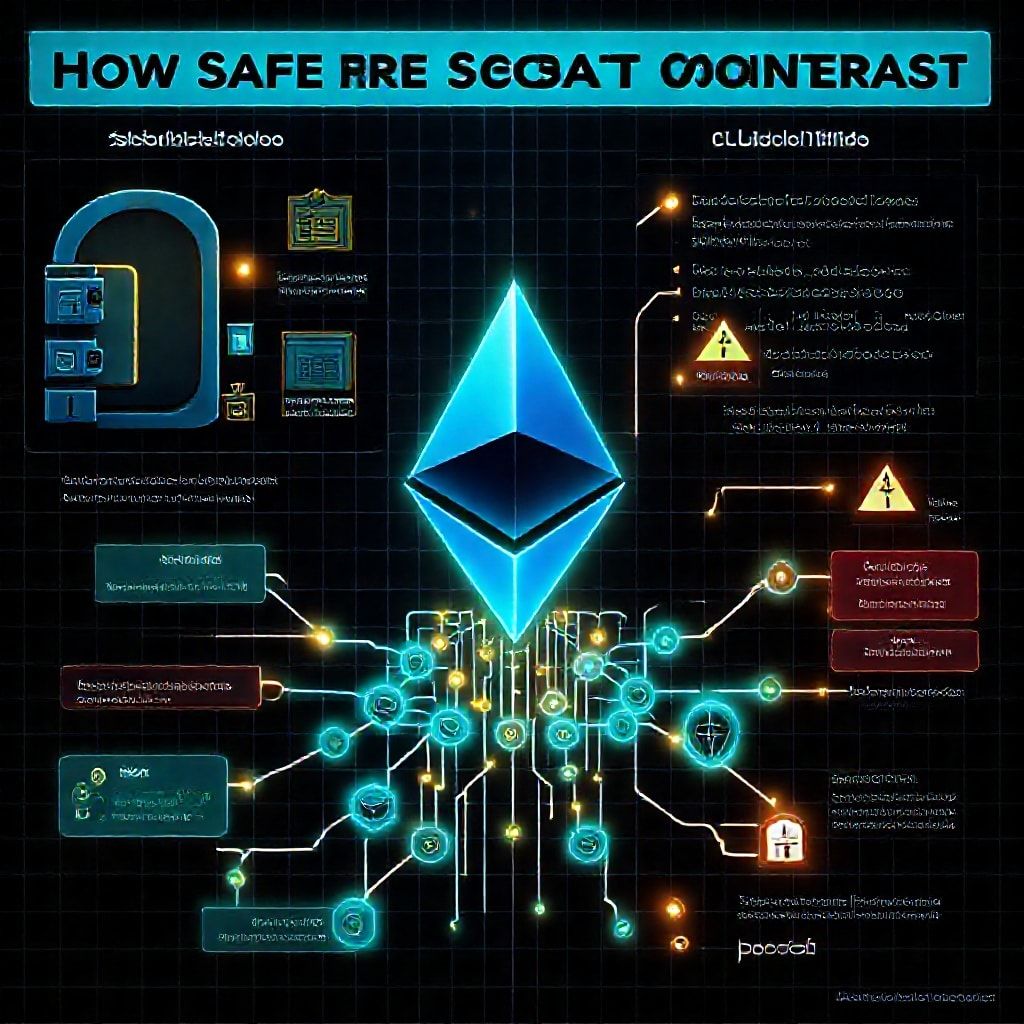How safe are smart contracts on Ethereum?
How Safe Are Smart Contracts on Ethereum?
Introduction
If you’re skimming DeFi headlines, safety sits at the center of every decision. You hear about audits, bugs, and hack stories, and you wonder how much you should trust Ethereum’s smart contracts with real money. The reality isn’t a simple yes or no—safety is a blend of code quality, protocol design, and how you monitor and manage risk day to day. This piece dives into what makes Ethereum smart contracts safe, what can still go wrong, and how traders across forex, stocks, crypto, indices, options, and commodities can approach on-chain trading with confidence.

Key safety features and how they work
- Deterministic execution and formal boundaries: Ethereum smart contracts run on a sandboxed, deterministic engine. The outcome of each transaction is defined by the contract’s code, with gas mechanics that prevent infinite loops and runaway processes.
- Standard libraries and audits: Trusted libraries (think OpenZeppelin) reduce common mistakes. Public audits and bug bounty programs push teams to iron out critical flaws before deployment.
- Immutable code with guarded upgrade paths: Once deployed, code is not supposed to change. When upgrades are needed, patterns like proxy contracts and timelocks provide a controlled, transparent path to improvement, reducing the risk of sudden, unreviewed changes.
Historical lessons that still guide safety
- The DAO and Parity incidents reminded the ecosystem that even small bugs or misconfigurations can escalate quickly. These events sparked stronger governance, more rigorous testing, and a culture of independent reviews.
- The rise of formal verification and broader test coverage showed that verifying properties (like access controls or reentrancy protection) can catch classes of bugs that tests alone might miss.
Design patterns that boost safety
- Multisignature controls and timelocks slow down risky actions, giving communities time to react to potential threats.
- Pausable contracts and circuit breakers let protocols halt activity when anomalies appear.
- Oracle safety layers and diversified data feeds reduce the risk of a single-point data failure skewing on-chain decisions.
Cross-asset DeFi: what safety enables across markets
- Forex and stablecoins: seamless cross-border payments and hedging on-chain, with price oracles and collateral management as safety rails.
- Tokenized stocks, indices, and commodities: on-chain ownership and derivatives rely on trusted assets and robust settlement logic; safety depends on accurate pricing and secure custody of underlying tokens.
- Crypto and options: on-chain derivatives expand access but heighten risk if oracle feeds, funding rates, or liquidation mechanics falter.
Reliability and leverage: practical tips for traders
- Start with risk-aware sizing: keep exposure modest when trying new protocols; use diversified venues rather than one single chain.
- Favor audited, well-established protocols and monitor liquidity and slippage closely.
- Use charting tools and on-chain analytics to verify price feeds, reserve health, and protocol incentives before entering a position.
- If you use leverage in DeFi, approach it conservatively, maintain ample collateral, and watch for rapid liquidity crunches during stress events.
Future trends: AI, safety, and the evolving DeFi landscape
- AI-driven risk analytics on-chain could help spot anomalies, لكنها must be fed with high-quality data and guarded against manipulation.
- Privacy-preserving tech and zk-rollups promise to improve scalability and confidentiality without sacrificing auditability.
- The push for standardized security practices, broader formal verification, and cross-chain safety nets will shape how confident participants feel about on-chain trading.
Conclusion and slogan
Smart contracts on Ethereum trade on the edge between innovation and risk. With strong coding practices, disciplined risk management, and trusted tooling, you get safer access to a spectrum of assets—from forex to commodities—without surrendering the decentralization edge. Safe contracts, smoother trading—your roadmap to confident DeFi participation.
YOU MAY ALSO LIKE




